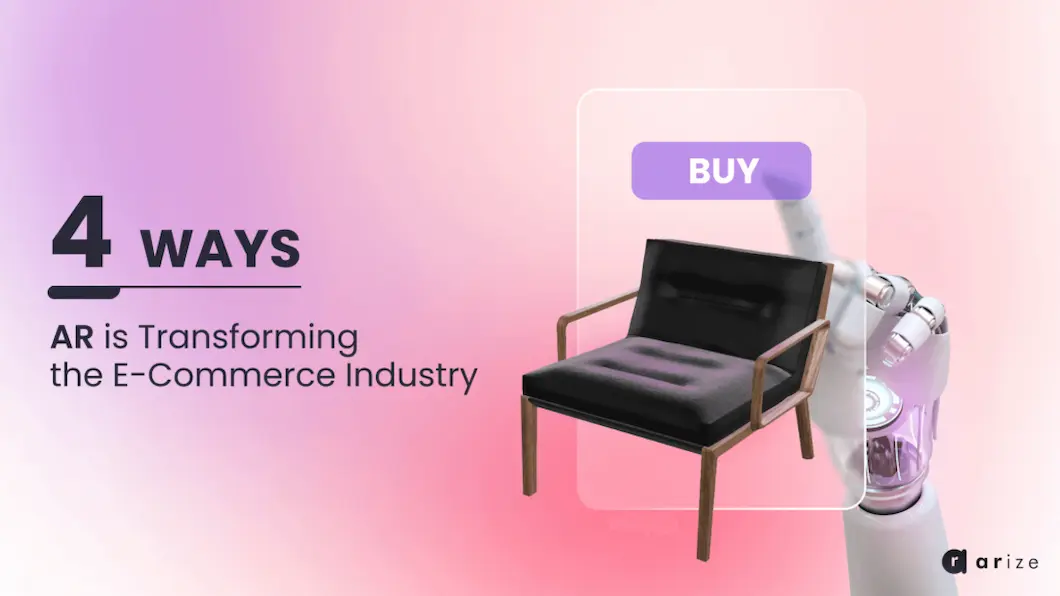The e-commerce experience is not a new one. Online shopping has been around since the mid-90s. It has only recently begun to take off and become a more widespread means of shopping for the global population.
The events 2020 caused the extensive adoption of online shopping as the primary means of retail and grocery shopping. This unprecedented event meant that the online shopping experience had to evolve and become fitter for purpose, elevating the consumer’s online experience and creating the most straightforward and user-friendly model for them.
While the experience has improved and evolved over the last two years, it still falls short of providing a more physical encounter with which shoppers can connect.
AR: The Retailer’s Solution
Enter Augmented Reality. AR technology is revolutionizing online shopping and making it a more accurate, interactive event for users by giving them a holistic view of the products they buy.
And it is working too. Data shows brands that employ AR on their websites are seeing a 19% increase in customer engagement and conversion rates. (a 90% increase for those who use AR vs. those who don’t.)
AR has also proved to be the solution to one of online shopping’s biggest hurdles, returns. Due to the amount of guesswork involved in buying goods online, many customers were disappointed by their purchase as it did not live up to their expectations in real life. Alternatively, they would buy an item in multiple styles and sizes, keeping the one they like and returning the rest.
With AR providing consumers with a much more detailed look at the products they are buying, they can use this to make a more informed purchase decision, bringing down return rates and saving retailers money.
4 Transformation Ways in E-Commerce
It’s important to note that many people still prefer the traditional shopping experience. While e-commerce continues to grow, it is more to do with convenience and necessity than a particular affinity for the process.
The emotional connection with a brand keeps customers returning and converts their visits into sales. A relationship that doesn’t exist as strongly in the online world.
To combat this, brands need to make online shopping more akin to physically being inside a store, and here are some ways that AR is helping to achieve this:
1- Virtual Try-Ons
A Virtual try-on is an AR feature that lets shoppers “try on” the product they are shopping for via their electronic device to find the best fit. Many online retailers in the market offering products like clothes, fashion accessories, or even make-up allow shoppers to sample the look and feel of their products virtually through AR.
The realistic representation and the feature’s personalization allow shoppers to make an informed decision while purchasing.
2- Virtual Product Aisles
Walking through product aisles in physical stores is one of the necessary buying experiences that boosts customer satisfaction. It was also an excellent opportunity for retailers to cross-sell and upsell their products during a customer’s shopping trip.
Augmented reality implementation in e-commerce presents similar opportunities to merchants. They can offer their customers the convenience of exploring various products in the virtual product aisles using AR-enabled 3D projection technology. Buyers only need a click on a placed product on the virtual shelf to learn more about or purchase it.
3- AR Mirrors
AR mirrors are more of a bridge between the gap between physically going to the store and shopping online. Intelligent mirrors are more likely to be found in-store than in a user’s home.
Using RFID and AR technology, they create a virtual life-like reflection of the person standing before them and allow that user to select clothes, hairstyles, make-up accessories, and more at the touch of a button.
Thanks to these mirrors, more decisions may be made on a shopping excursion more quickly, which enables customers to see how they would look much more rapidly than in a traditional fitting room scenario. It also limits physical contact between the customer and the products, meaning less chance of damage, wear-and-tear, or theft.
4- Product Preview
AR has a significant benefit in the retail home improvement sector. It allows consumers to see how a product would look in their home environment, which physical shopping has been unable to provide up until now.
Using an electronic device, shoppers can place their desired product anywhere in their home to see how it would fit and whether it matches the décor. AR technology gives buyers a 360-degree perspective; for more information. They are more confident in their purchase and less likely to want to return it.
Unlimited Potential
The benefits of AR technology in e-commerce are unlimited. Brands and businesses can use it to evolve the customer experience and transform the face of online shopping. Augmented reality integration with e-commerce fuels the growth of customer-centric solutions and building more personal brand experiences.



